I am playing with BJT push-pull circuit from a previous question (there are 3 push-pulls with various speedup tricks for comparison):

I've recently realized, that's it's voltage follower, so it's not supposed to show rise/fall times shorter than ones of input signal.
Is it possible to modify it somehow to have more 'steep' output? I don't expect it to be like Schmidt trigger, just want it to have more than 1 voltage amplification near 0.5*VCC.
Is that possible? Probably some fancy level shifting, diodes...
Updated circuit which gave me somewhat desired results. 150 Ohm resistors on the right are load.
